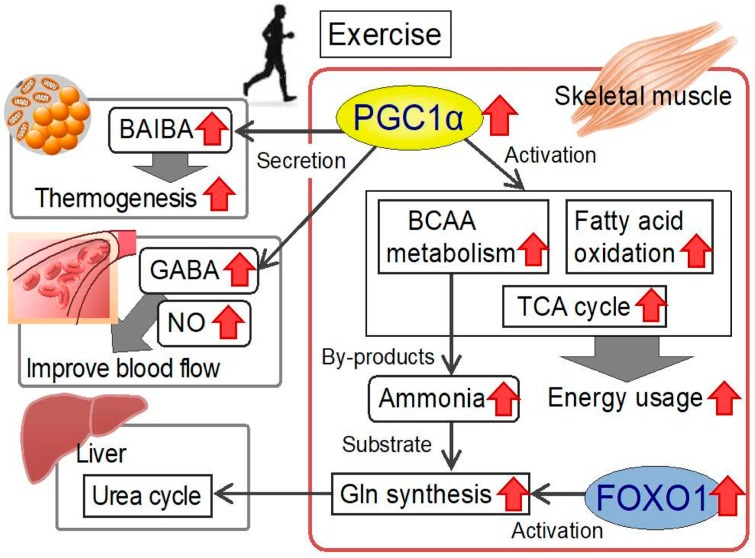Figure 1.
Metabolic changes in the skeletal muscle during exercise and amino acid-mediated interorgan effects. PGC1α expression in the skeletal muscle is increased by exercise. Increased PGC1α activates BCAA metabolism, fatty acid oxidation, and the TCA cycle and increases energy usage [20,24]. BCAA degradation leads to the formation of ammonia by-products. FOXO1 increases glutamine synthetase (adds ammonia to glutamic acid), resulting in the elimination of ammonia from the liver (urea cycle) [23]. In turn, exercise-induced PGC1α increases BAIBA, GABA, and arginine levels in the skeletal muscle [24]. BAIBA secreted from the skeletal muscle causes browning of white adipose tissue and increases thermogenesis [27]. GABA and arginine-derived NO may act on blood vessels and improve blood flow. Thus, in terms of preventing metabolic diseases, myokines are likely to be important, as myokines mediate the signaling of the favorable effects of exercise from the skeletal muscle to other organs. Ingestion of these amino acids as supplemental foods may improve human health. PGC1α, peroxisome proliferator-activated receptor γ coactivator 1-α; BCAA, branched-chain amino acid; TCA cycle, tricarboxylic acid cycle; FOXO1, forkhead box protein O1; Gln, glutamine; BAIBA, β-aminoisobutyric acid; GABA, γ-aminobutyric acid; NO, nitric oxide.

